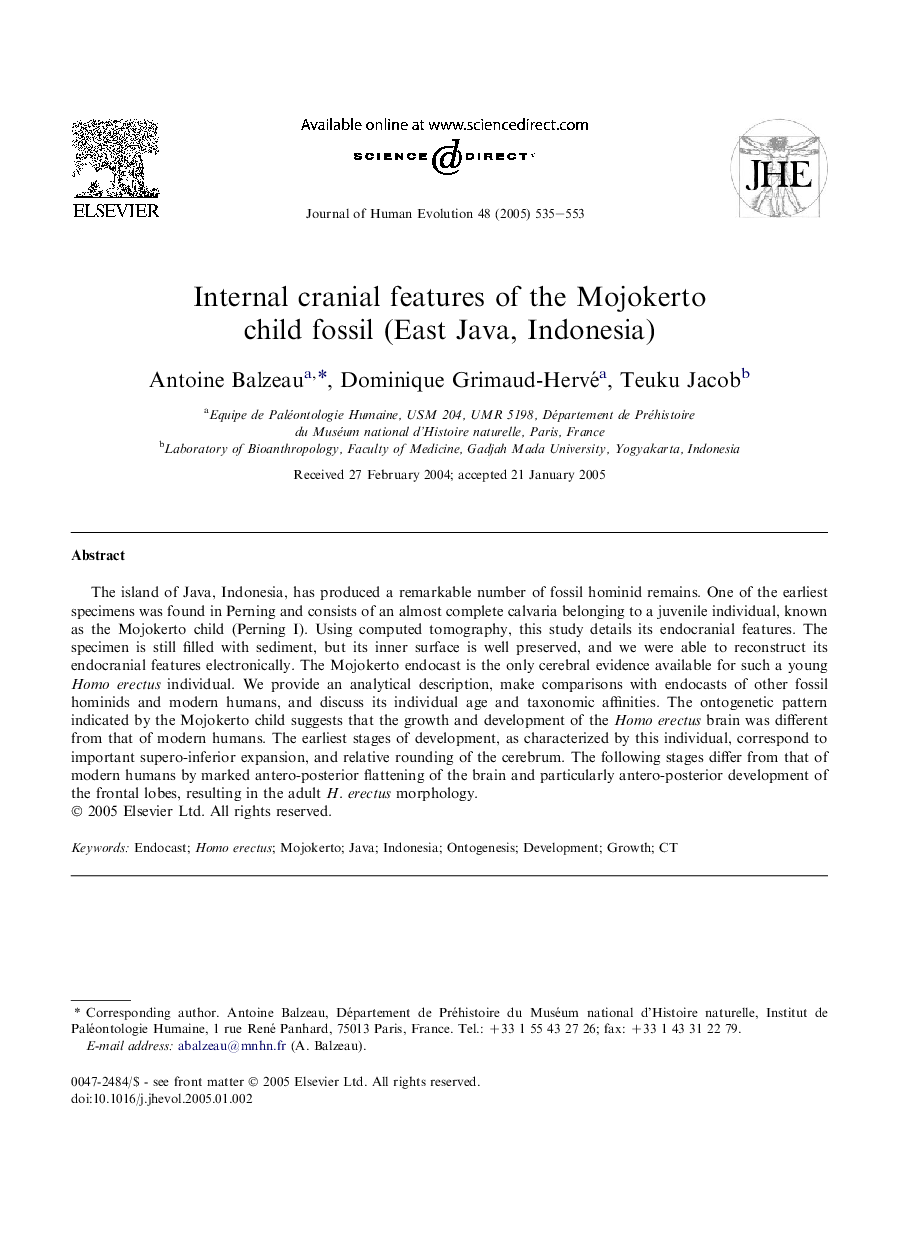| Article ID | Journal | Published Year | Pages | File Type |
|---|---|---|---|---|
| 9486095 | Journal of Human Evolution | 2005 | 19 Pages |
Abstract
The island of Java, Indonesia, has produced a remarkable number of fossil hominid remains. One of the earliest specimens was found in Perning and consists of an almost complete calvaria belonging to a juvenile individual, known as the Mojokerto child (Perning I). Using computed tomography, this study details its endocranial features. The specimen is still filled with sediment, but its inner surface is well preserved, and we were able to reconstruct its endocranial features electronically. The Mojokerto endocast is the only cerebral evidence available for such a young Homo erectus individual. We provide an analytical description, make comparisons with endocasts of other fossil hominids and modern humans, and discuss its individual age and taxonomic affinities. The ontogenetic pattern indicated by the Mojokerto child suggests that the growth and development of the Homo erectus brain was different from that of modern humans. The earliest stages of development, as characterized by this individual, correspond to important supero-inferior expansion, and relative rounding of the cerebrum. The following stages differ from that of modern humans by marked antero-posterior flattening of the brain and particularly antero-posterior development of the frontal lobes, resulting in the adult H. erectus morphology.
Related Topics
Life Sciences
Agricultural and Biological Sciences
Ecology, Evolution, Behavior and Systematics
Authors
Antoine Balzeau, Dominique Grimaud-Hervé, Teuku Jacob,
